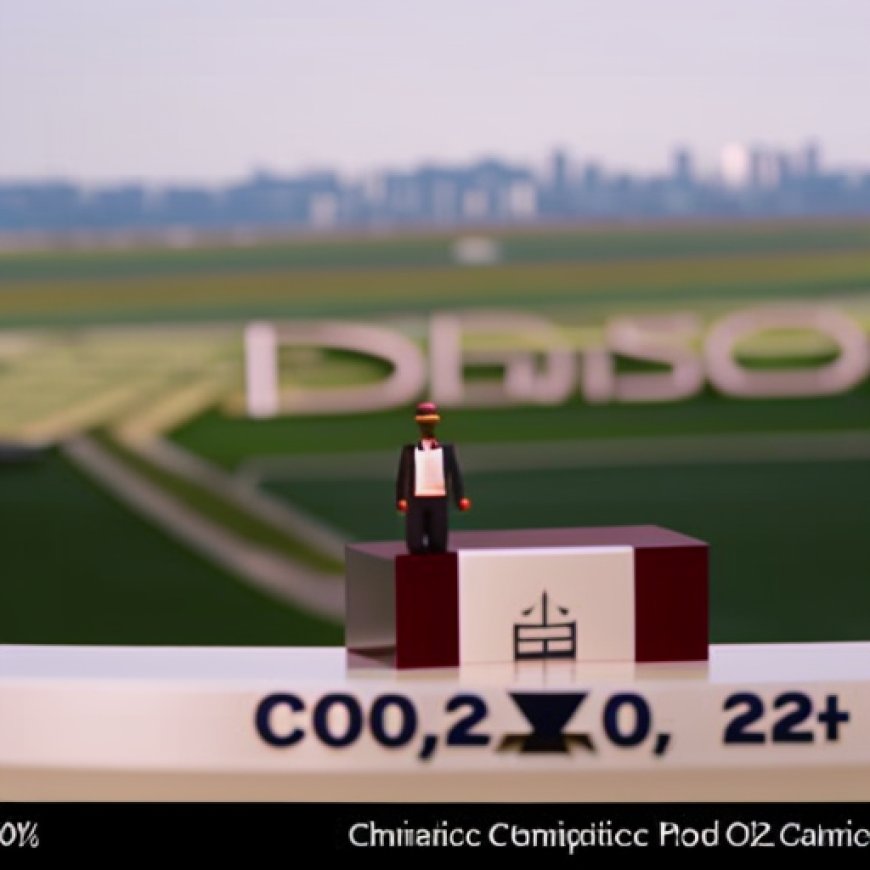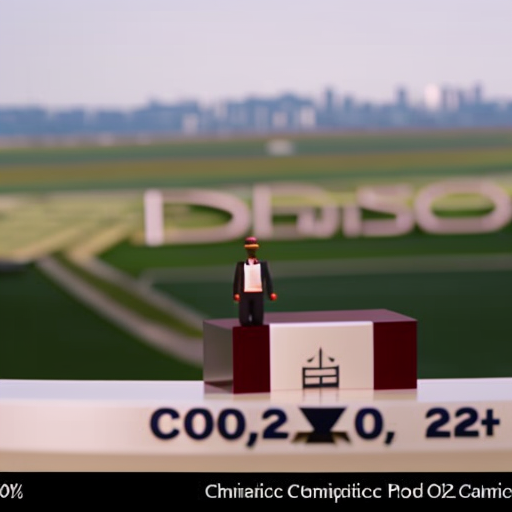Microsoft is paying $20 million to carbon-capture 0.25% of its annual CO2 emissions
Microsoft signed a 10-year carbon capture deal with Heirloom Quartz


Microsoft Announces Deal to Purchase Carbon Dioxide Removal
Microsoft has made a significant commitment to sustainability by announcing a deal to purchase up to 315,000 metric tons of carbon dioxide removal over the next ten years. This investment not only demonstrates Microsoft’s dedication to the Sustainable Development Goals (SDGs), particularly Goal 13: Climate Action, but also highlights their support for innovative technologies such as carbon capture. The deal includes a partnership with Heirloom, a California startup that specializes in capturing CO2 directly from the air.
Heirloom’s Technology and Impact
Heirloom utilizes the natural properties of limestone to capture CO2 pollution from the atmosphere and store it in various ways, including in concrete. Their technology accelerates limestone’s ability to absorb CO2 from the air, reducing the process from years to days. This breakthrough has the potential to revolutionize the carbon capture industry and contribute significantly to achieving SDG 13.
Microsoft’s Carbon Negative Ambition
For Microsoft, this investment represents a small step towards their ambitious goal of becoming carbon negative by 2030. Currently, Microsoft emits the equivalent of 13 million tons of CO2 annually. By investing in carbon dioxide removal projects like Heirloom, Microsoft aims to remove more CO2 from the air than it produces, making a substantial impact on global emissions.
The Significance of Microsoft’s Investment
Microsoft’s multi-year investment not only provides financial support to Heirloom but also helps establish stability and credibility for the carbon capture industry. This partnership demonstrates that corporate buyers like Microsoft can play a crucial role in accelerating the development and deployment of carbon capture technologies. By unlocking lower costs of capital for companies in this sector, Microsoft is driving innovation and progress towards achieving the SDGs.
Quotable: Corporates Scaling Up Carbon Dioxide Removal
“It is incredibly encouraging to see agreements of this magnitude because corporate buyers, like Microsoft, can unlock a significantly lower cost of capital for Direct Air Capture companies that are seeking to finance infrastructure projects, such as future carbon dioxide removal facilities.”
– Robert Keepers, Managing Director, JP Morgan Green Economy Banking
By the Digits: The Microsoft-Heirloom Carbon Capture Deal
Here are some key numbers related to the Microsoft-Heirloom carbon capture deal:
- 13 million metric tons: Microsoft’s CO2 emissions in 2022.
- $200 million: The minimum amount Microsoft is poised to spend over the 10-year lifetime of the deal.
- $53 million: The capital raised by Heirloom from investors, including Bill Gates’ Breakthrough Energy Ventures and Microsoft’s Climate Innovation Fund.
- $600 million: The funding awarded to a consortium of companies, including Heirloom, under the Bipartisan Infrastructure Law passed by the Biden administration.
- 45 metric tons: The current annual carbon dioxide capture capacity of the industry, according to the International Energy Agency.
A Brief Timeline of Microsoft’s Recent Carbon-Mitigating Deals
Microsoft has been actively pursuing various carbon-mitigating deals. Here are some notable examples:
- July 2022: Microsoft signs a 10-year deal with Climeworks to remove 10,000 tons of CO2 emissions annually.
- March 2023: Microsoft partners with CarbonCapture to trap 5 million metric tons of carbon emissions annually by 2030.
- March 2023: Microsoft collaborates with Running Tide to remove 12,000 tons of CO2 over the next two years using ocean alkalinity enhancement.
- May 2023: Microsoft announces a deal with Ørsted to purchase carbon credits representing 2.76 million metric tons of CO2 captured and stored beneath the North Sea.
Related Stories
- Tree planting: Sowing complacency
- The EU showed it’s possible to reduce carbon emissions while posting economic growth
- EVs are far cleaner than gas-powered cars—even if batteries require more mining
SDGs, Targets, and Indicators
1. Which SDGs are addressed or connected to the issues highlighted in the article?
- SDG 13: Climate Action
- SDG 9: Industry, Innovation, and Infrastructure
2. What specific targets under those SDGs can be identified based on the article’s content?
- SDG 13.2: Integrate climate change measures into national policies, strategies, and planning
- SDG 9.4: Upgrade infrastructure and retrofit industries to make them sustainable
3. Are there any indicators mentioned or implied in the article that can be used to measure progress towards the identified targets?
- Amount of CO2 removed from the atmosphere
- Investment in carbon capture technologies
- Number of commercial facilities for carbon capture
- Amount of CO2 emissions reduced
Table: SDGs, Targets, and Indicators
| SDGs | Targets | Indicators |
|---|---|---|
| SDG 13: Climate Action | 13.2: Integrate climate change measures into national policies, strategies, and planning | – Amount of CO2 removed from the atmosphere – Investment in carbon capture technologies – Number of commercial facilities for carbon capture – Amount of CO2 emissions reduced |
| SDG 9: Industry, Innovation, and Infrastructure | 9.4: Upgrade infrastructure and retrofit industries to make them sustainable | – Investment in carbon capture technologies – Number of commercial facilities for carbon capture |
Behold! This splendid article springs forth from the wellspring of knowledge, shaped by a wondrous proprietary AI technology that delved into a vast ocean of data, illuminating the path towards the Sustainable Development Goals. Remember that all rights are reserved by SDG Investors LLC, empowering us to champion progress together.
Source: qz.com

Join us, as fellow seekers of change, on a transformative journey at https://sdgtalks.ai/welcome, where you can become a member and actively contribute to shaping a brighter future.







